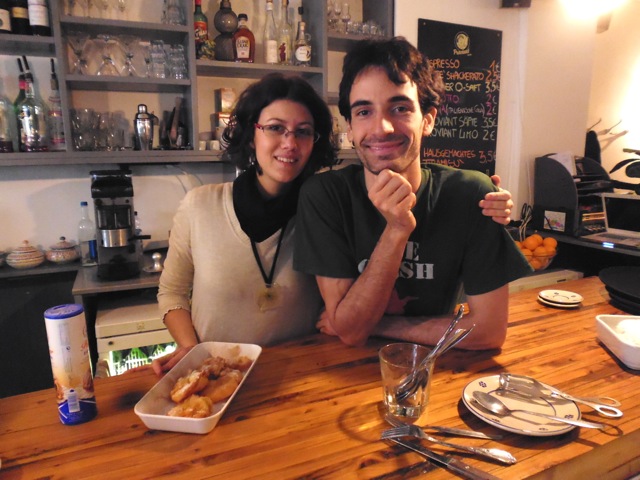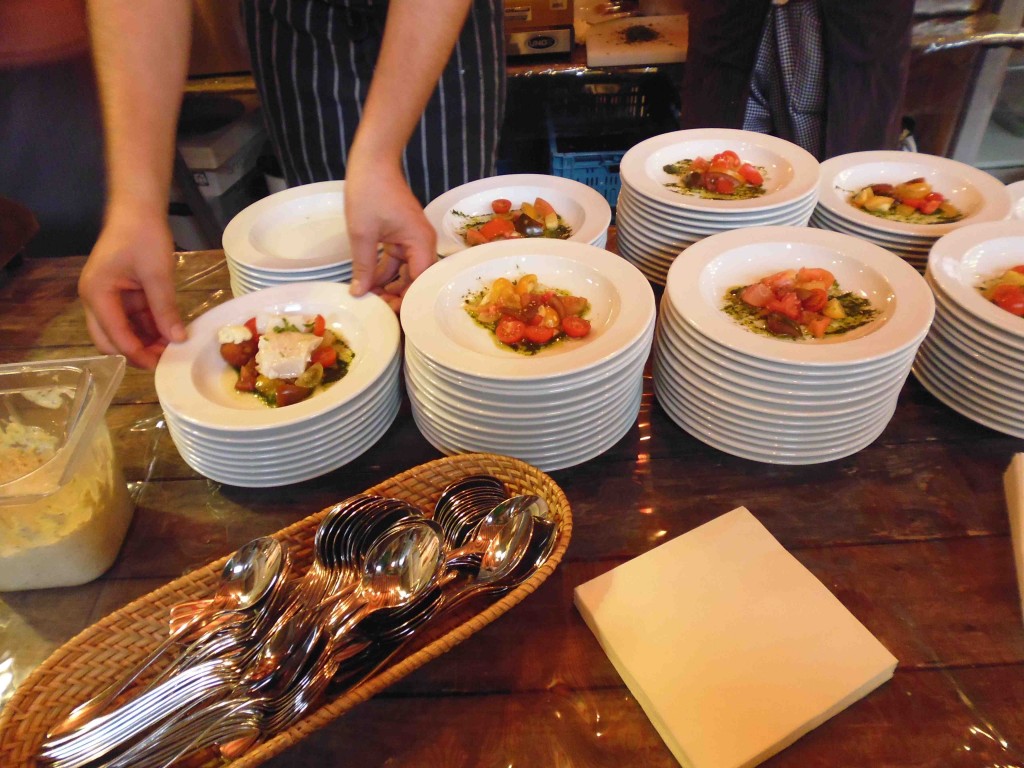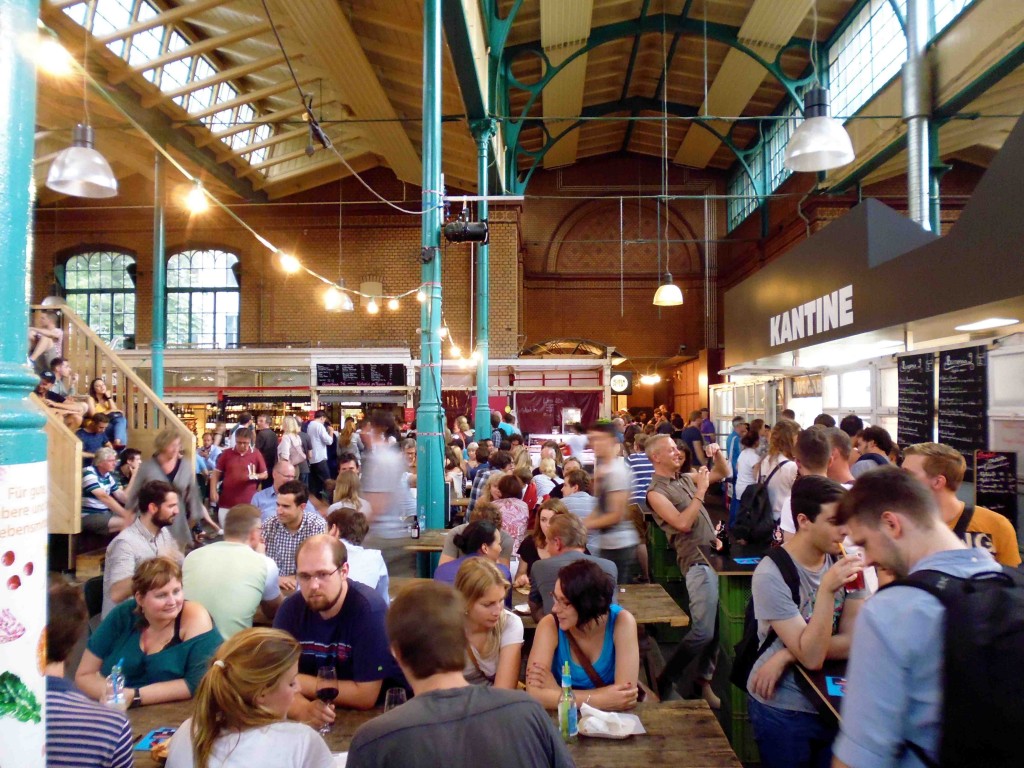Beyond Michelin: The Berlin Guide for Foodies

The Michelin Guide doesn’t understand Berlin’s foodie scene. It is the bible for eating in France. But in Berlin they throw a small net that catches only the big fish. This makes the Michelin Guide an imperfect source for the German capital.
Berlin should be Europe’s metropolis of Michelin ‘Bib Gourmands’. For a Bib, what counts is the quality of the food rather than the cadre. But in Berlin there are only nine listed in the Michelin guide. Yes that’s right, only NINE in the whole city! Compare that to 63 of them in Paris. And only two of them are east of Schoeneberg. It’s as if the suit and tie-ed Michelin writers are afraid of going anywhere too funky.
Here are ten of the Needle’s foodie recommendations, because we aren’t intimidated to venture into places where you can’t pay with a credit card. At the end of our list, we explore why Michelin can’t quite figure out the Hauptstadt.
Eight Unrecognised ‘Bib Gourmands’:
Brio (Italian, Kreuzberg): Certainly the best of Berlin’s casual Italian restaurants. A menu of small plates (Italian ‘tapas’) with excellent macco di fave, delicate hand-made ravioli, a remarkable pulpo, and classic desserts such as tiramisù. You need to order two to three plates to make a meal. They do a mean aperitivo, the best spritz in the city and accompanying sfizi like supplì and Parmesan tuiles or panelle. Giulia, the main cook, is from Rome, and her background is well in evidence on the menu. Alas, the Sunday brunch has been suspended. The founding couple trained at a three-star Michelin restaurant in Mantova, Italy. Popular with a young and arty Italian ex-pat crowd, who exhibit their creations on the resto’s walls.
Wirtshaus zum Mitterhofer (Alpine, Kreuzberg): Run by the jolly and inimitable Hannes, a Südtirol transplant to Berlin, this restaurant serves up some of the finest Alpine (Italian-German fusion) food in the city. Plenty of dumplings (Knödel), game dishes, and excellent classics such as Tafelspitz and Wiener Schnitzel. The innovative daily changing menu is phenomenal and complements the standards on the fixed menu. There is here an Italian attention to ingredients but applied to German-style cooking. A relaxed, pub-like atmosphere, which is at times charmingly chaotic. Come with time, and have a glass of the high-altitude Goldmuskateller (grown too high to be sweet) called Pfefferer as an aperitif.

Le Marigny (French, Kreuzberg): This tiny French bistro doesn’t try to do too much. And that’s a good thing, because what it does do it does very well. It has no set menu, only one that is weekly and can be ordered à la carte. Right now they are featuring beef tartar with capers and poached egg. Last week, it was beef stroganoff with potato Rösti. The vintage interior of polished wood is charming and intimate––a low ceiling and a youthful Kreuzkölln clientele. Very good simple wine list, classic French mains and desserts. A neighbourhood find.
Lokal (Regional, Mitte): A restaurant that focuses on regional ingredients, and recently written up in the New York Times. I was surprised it wasn’t listed in Michelin. Does one damn good steak on the bone. The menu changes frequently, with a focus on the ingredients: ‘Heart of lamb, rutabaga, black cabbage, rose hips, and chervil tubers’ or ‘Pumpkin, broccoli, salsify, mushrooms, pear, phyllo dough, and purslane’ are some innovative combinations. It has a trendy Mitte-fashion following and checks all the boxes for big-city glamour. Excellent list of German wines.
Sasaya (Japanese, Prenzlauer Berg): You may have heard that there is no good Japanese restaurant in Berlin (unless you want to pay the high pricetag of Gingi’s). But Sasaya is the exception. The sushi is good, but remember Berlin isn’t Tokyo, or Vancouver or New York for that matter, and fresh fish is not its forte. I go to Sasaya for its excellent Izakaya canteen food. Look for the small plates of meat and vegetables (such as their rosa seared roast beef or karaage) or desserts (kuromitsu black honey mousse). You must reserve, and it’s notoriously hard to get a reservation. Popular with Japan ex-pats and the Japanese Embassy crowd.
Sarods (Thai, Kreuzberg): Run by a Thai-German gay couple who offer not just Thai classics but also more unusual regional specialities from south of Bangkok, such as cuttlefish and scampi in chili and garlic or a spicy papaya salad with crab, tamarind, and lemon. No MSG is used and there is a focus on very good ingredients. The interior is elegant and relaxed, the staff wonderful. Very affordable.
Daijiale (Chinese, Schoeneberg): Not only was I astonished to discover a really good Chinese restaurant in Berlin, but also one that is regionally oriented (to the Northeast). I went with a friend who lived in Hong Kong and has an appreciation for the variety of Sino-cuisines––and his reaction was ‘you’ve got to be kidding me, this would be excellent in China’. The first pages of the menu with pictures are the superb regional dishes: cucumber in garlic and vinegar, crispy pork in sweet-sour sauce, YüXiang-style tofu with morels. The decor is of an old-fashioned provincial Chinese eatery, with big round tables and lazy susans. Book for ten friends and share everything. The owner must be a fan of craft beer. Excellent wine list too. In a completely abandoned-feeling corner of Schoeneberg near Yorkstraße station, but you must reserve.
Markthalle 9 (Market): This doesn’t count as a restaurant, but it is the nerve centre of the young Berlin foodie scene. This late 19th-century market has been redeveloped in the past couple years into a hall of delights. Recently opened is Kumpel & Keule, one of the city’s best butchers and sausage makers. The city’s best bread is here too: Sironi (Italian style). There’s very good bbq meats at Big Stuff, greek specialties at Grinbox, tapas, cheesemongers, fresh oysters, craft beer… The people who run Caffe 9, probably the best place in the city to taste arabica, also run the Kantine 9 which has lunch plates. And of course there are the many vendors for the farmer’s market (Tues., Fri., Sat.) and it is packed with stalls and people for Street Food Thursdays. Add to that monthly apero and breakfast markets. Just up the street is Berlin’s best French wine distributor and vendor, Passion Vin.
Two Recognised ‘Bib Gourmands’:
I admit that two of my faves have been discovered by Michelin…
Renger Patzsch (French-German fusion, Schoeneberg): An airy interior with photographs by the eponymous artist on the walls, this restaurant has excellent fixed menus (and one of the best vegetarian menus in the city), with delicate soups and salads, flakey Alsatian tartes flambée, and reliably fantastic meat mains (neck of lamb fill with cassoulet, for example). With its long tables, polished service, but casual atmosphere, in a bright elegant Altbau room, it is a very good place to bring visitors to Berlin.
Lamazère (French, Charlottenburg): That the best possible version of the archetypal French brasserie should be extremely hard to find in Paris, but is thriving in Berlin, tells you something about the economics of the restaurant scene in the two cities. Lamazère is not obliged to cut corners. From a board, you can order from a changing combination of entrée, plat, dessert. As far as desserts are concerned, the riz au lait with salted caramel makes you want to lick the wooden spoon. Régis is an excellent host––make sure to ask him for his wine selections, he is talented and he has a phenomenal and unusual list of small producers from which to draw.
(I should add that the Needle has been approached many times to produce ‘sponsored or ghostwritten’ blogposts, and has not once said yes, and will never say yes to advertising posing as blogging. These are independent choices).

Why is Berlin a Difficult Place to Be a Foodie
I often hear visitors saying you can’t eat as well in Berlin as elsewhere. This is nonsense. Like with everything else in this city, you need to know where to go. But keep in mind: the city is vast. Eight times the surface area of Paris proper. Many of the good restaurants are in faraway neighbourhoods, where you may never have even been. Would you go to Schmargendorf unless you knew it had a one-star Michelin resto?
Another problem is that pretty-good cheap eats tend to obscure the real finds. The city is teeming with students and budget-eating artists, meaning many restaurants struggle to meet the expectations of their budgets. Or they end up saving on ingredients. Berlin is the queen of the 5 EUR ‘pretty-good’ Vietnamese lunch special.
What are Michelin’s Choices?
The Michelin 2016 Guide listings were published this month, and they have made fine choices for their criteria. But still no resto in Berlin has three stars.
Two Star Restaurants: Fischers Fritz, a big hotel establishment, used to be the lone two star for many years. But it has been joined in recent times by Lorenz Adlon Esszimmer (again, a luxury hotel establishment), Reinstoff (with its Noma/Copenhagen style molecular approach and minimal style to match), Tim Raue (the German celebrity chef now has at least four restaurants in the city), Facil (again in a high-end hotel, with a famous tasting menu), and Horváth (a Kreuzberg neighbourhood restaurant on the Canal that was upgraded from one star).
One Star Restaurants: There are more than a dozen one-star restaurants: Pauly Saal (in the converted Jewish Girls’ school in Mitte), VAU, Rutz Wine Bar (a good place to try things, because you can also eat at the bar), SkyKitchen (with an unlikely location deep in the former East), Cinco, Hugos, First Floor, Les Solistes (in the Waldorf Astoria), Markus Semmler, Frühsammers, and then four new comers for 2016: Bieberbau (in Wilmersdorf), Richard (on an industrial stretch of Kreuzberg’s Köpenickerstrasse), Nobelhart & Schmutzig (a newish regional-focused resto, quickly discovered by the NY Times this year) Bandol sur Mer (a longtime favourite on Torstraße that’s finally been noticed) .
Why Michelin Doesn’t ‘Get’ Berlin
Michelin doesn’t ‘get’ Berlin because Berlin is not a city with a Michelin expense account. Other places––London, Paris, New York––often look corporate compared to Berlin, and the criteria of a corporate guide like Michelin reflects those expectations. Michelin is out of step with the young, innovative, casual tone set by the German capital. Add to this that the city is increasingly international, with new arrivals constantly coming especially from Southern Europe and the Middle East, with expectations to match. But they do not often have the means, the investment, to create the luxurious establishments that make the Michelin grade. You will notice that Berlin is the city of Michelin restaurants located in luxury hotels. That’s because business travellers are more likely to afford a Michelin meal of 200 EUR plus wine, on an expense account. That’s out of reach for a painter with good taste but just getting by with a grant.
The fact that Berlin, then, is a city of excellent but more affordable eats is something to celebrate.
*
Do you have a Berlin favourite? Please add it to the comments section.
____
-Joseph PEARSON
**
Never miss a post! Subscribe:
